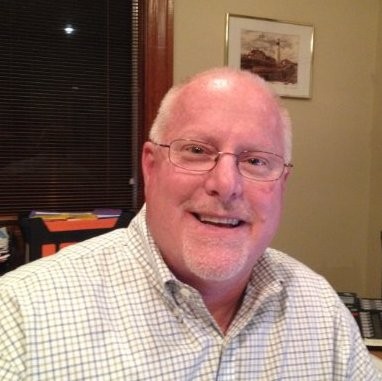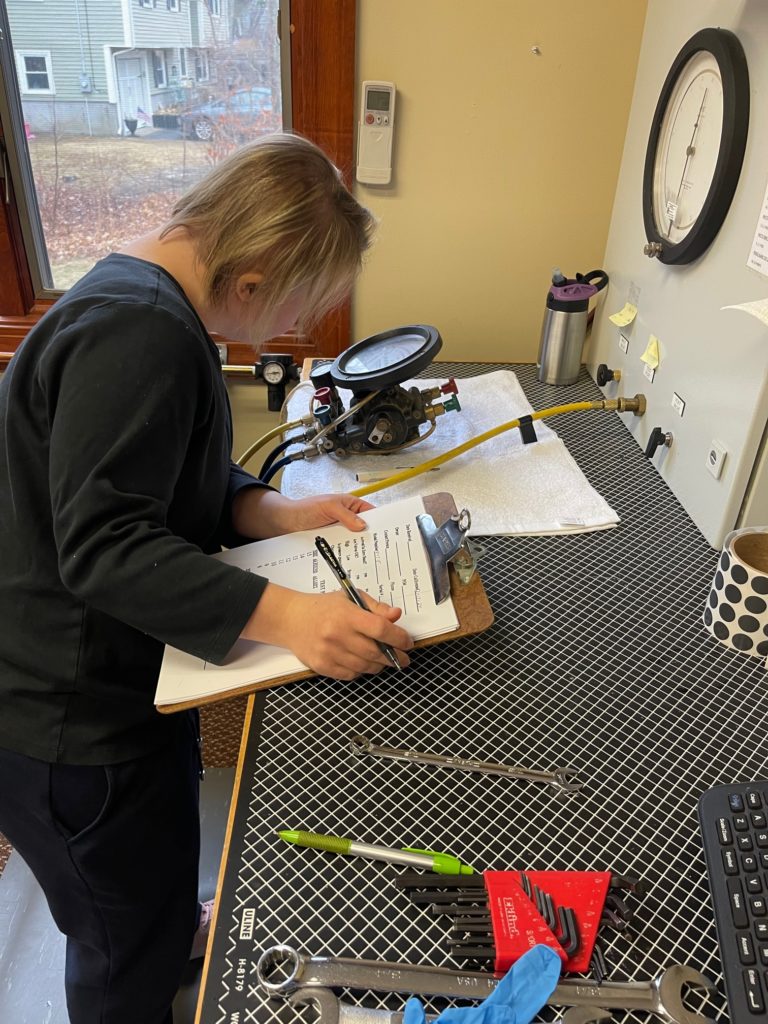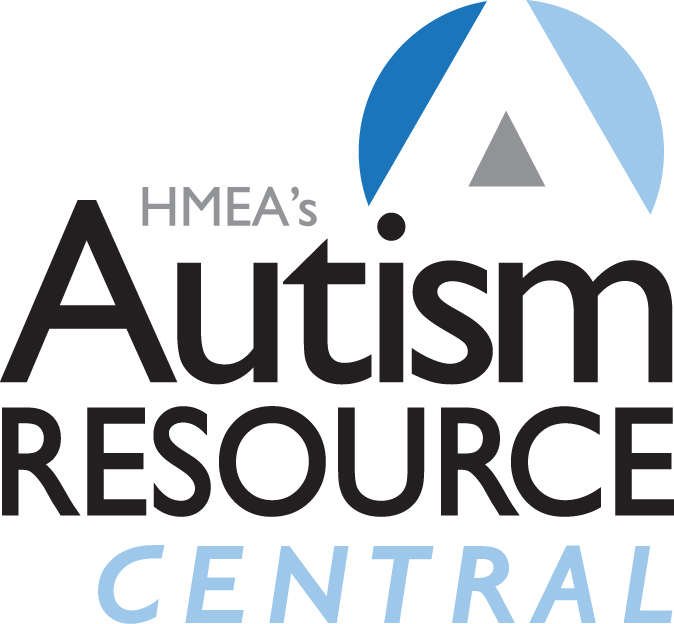King Gage Engineering is a leading supplier of engineering equipment such as flow meters, pressure indicators, and temperature meters. Ten years ago, HMEA formed a partnership with King Gage through our employment services program.
Today, several of the individuals we support are successfully employed part-time at King Gage. This team of HMEA workers performs a wide range of janitorial duties that include vacuuming, wiping down surfaces, taking out trash, and ensuring overall cleanliness. One of our supported individuals, Gina, works in a higher-level position testing certain backflow instruments.
Meet Chris
President, King Gage Engineering
How did you get involved with HMEA?
We were introduced to HMEA through a close friend, Michael Greenwood, who worked for the Massachusetts Department of Developmental Services. He worked very closely with many of the families who used HMEA services.
What are some of the skills the cleaning crew is working on?
Most of the individuals working for us are part of a cleaning crew, so they’re working on skills like vacuuming carpets, wiping down tables, and sweeping. The individuals are working on following instructions in sequential order, as well as developing the ability to think outside the box. We can help them achieve this by communicating and creating a welcoming environment for our employees.
Can you talk about the impact the cleaning crew has had?
When the cleaning crew is in the office, the mood turns into nothing but smiles and positivity. Everyone is so friendly and welcoming. We greet the individuals at the door with smiles, fist bumps, and high-fives!
As the individuals are greeted at the door, they all have their assigned tasks. These tasks have been deciphered before arrival by the HMEA employees because they are very knowledgeable about each individual’s strengths and weaknesses. This is fantastic to see because the individuals are interacting with each other and our employees, which is great exposure for both parties!
What moment are you most proud of?
We approached HMEA with the need for someone to do a specific job for us: testing certain back flow instruments. We were open to the process, and if the job was going to be too challenging, we had some other ideas in mind.
The individual who HMEA matched us with, Gina, has been fantastic. When we first met Gina’s parents, and then Gina, we were encouraged that this was going to work, but we also knew there would be challenges and the need for patience. We needed to get to know each other’s abilities and become comfortable having conversations about what tasks needed to get done.
There was a lot of effort put in on our end to prepare for this opportunity, and HMEA truly played an enormous role in making this happen. In the end, however, it was Gina that made this successful. She is a rock star! Her ability to think critically within the roles she is in within the company has been nothing but awesome.
As you know the rest is history and we could not be any happier and more satisfied with how well this worked out. We’re fortunate to have gone through the process and are embracing the opportunities to allow Gina to adapt and grow as an independent individual. We are so proud of her!
Would you encourage other area employers to hire folks from HMEA?
Yes, absolutely! More companies should take advantage of these opportunities in exposing these individuals to the world. They have so much to offer and it is a great reward for them and for us!
What advice would you give other area employers about how to create a work environment for folks from HMEA to succeed?
To work with HMEA, your company must be willing to work with the individuals and cater to their needs. Being open to making the appropriate accommodations for these individuals is key to making a safe, enjoyable, and productive workplace.
Your company should have a good relationship with the HMEA employees, which is very easy. HMEA employees are amazing to work with and have the ability to be empathetic and flexible with working alongside your company. It is their job to understand what your company needs and which individual within their program has the skills appropriate for the task in order to be matched appropriately.
Like everyone, structure is very important for these individuals. It helps them be able to form their own routine and what works best for them. Alongside structure comes accommodations. For example, being flexible with different safety tools and equipment is important. One way to prevent any accidents from happening is by being proactive.
We also found that communicating in multiple ways has been helpful – for example, verbally giving instructions as well as physically walking through them. It is also helpful if the individual watches an existing employee perform the task in front of them. Communicating any task in multiple ways helps avoid misleading instructions and can clarify any questions.
Finally, with communication comes feedback. From an employer standpoint, feedback is critical but must be delivered in a positive way. When it comes to Gina, for example, we have found that posing the feedback as a question helps her with her critical thinking. She thinks of a solution out loud, so we can see her train of thought and direct her to the way we want her to go.






